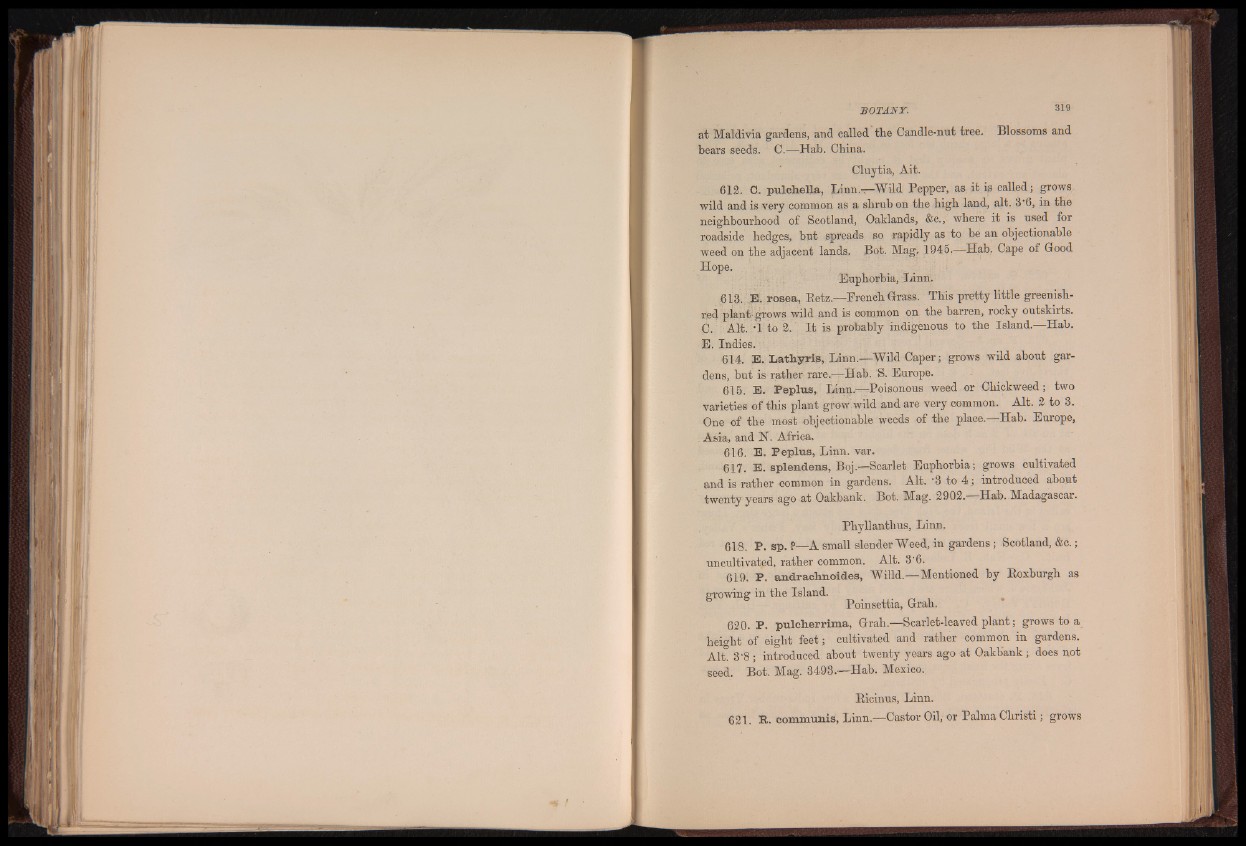
BOTANY. 319
at Maldivia gardens, and called the Candle-nut tree. Blossoms and
bears seeds. C.—Hab. China.
Cluytia, Ait.
612. C. pulchella, Linn.-r-Wild Pepper, as; it is called; grows
wild and is very common as a shrub on the high land, alt. 3‘b, in the
neighbourhood of Scotland, Oaklands, &c., where it is used for
roadside hedges, but spreads so rapidly as to be an objectionable
weed on the adjacent lands, Bot. Mag. 1945.—Hab. Cape of Good
Hope.
Euphorbia, Linn.
613. E. rosea, Betz.—Erench Grass. This pretty little greenish-
red plant grows wild and is common on the barren, rocky outskirts.
C. Alt. -L to 2. I t is probably indigenous to the Island.—Hab.
E. Indies.
614. E. Lathyris, L in n—Wild Caper; grows wild about gardens,
but is rather rare.—Hab. S, Europe.
615. E. Peplus, Linn.4vPoisonous weed or Ckickweed; two
varieties of this plant grow wild and are very common. Alt. 2 to 3.
One of the most objectionable weeds of the place. Hub. Europe,
i Asia, and N. Africa.
616. E. Peplus, Linn. var.
617. E. splendens, Boj.—Scarlet Euphorbia; grows cultivated
and is rather common in gardens. Alt. '3 to 4 ; introduced about
twenty years ago at Oakbank. Bot. Mag. 2902. Hab. Madagascar.
Phyllanthus, Linn.
618. P. sp. P—A small slender Weed, in gardens; Scotland, &c.;
uncultivated, rather common. Alt. 3'6.
619. P. andrachnoides, Willd.—Mentioned by Boxburgh as
growing in the Island.
Poinsettia, Grah.
620. P. pulcherrima, Grah.—Scarlet-leaved p lan t; grows to a
heio-ht of eight fe et; cultivated and rather common in gardens.
Alt. 3'8; introduced about twenty years ago at Oakbank; does not
seed. Bot. Mag. 3493.—Hab. Mexico..
Bicinus, Linn.
621. R. communis, Linn.—Castor Oil, or Palma C hristi; grows